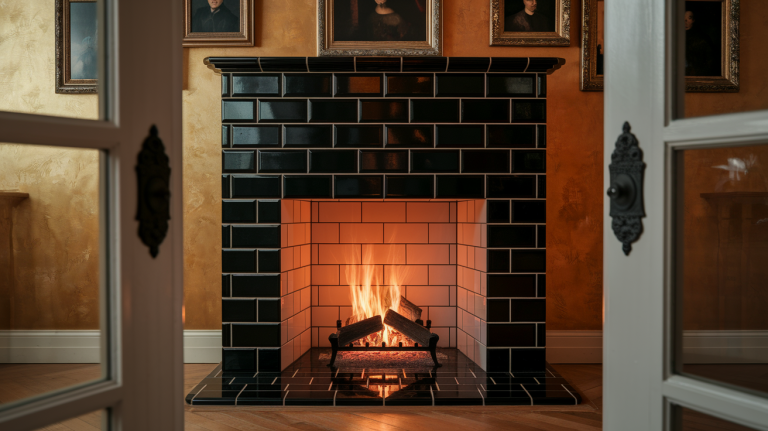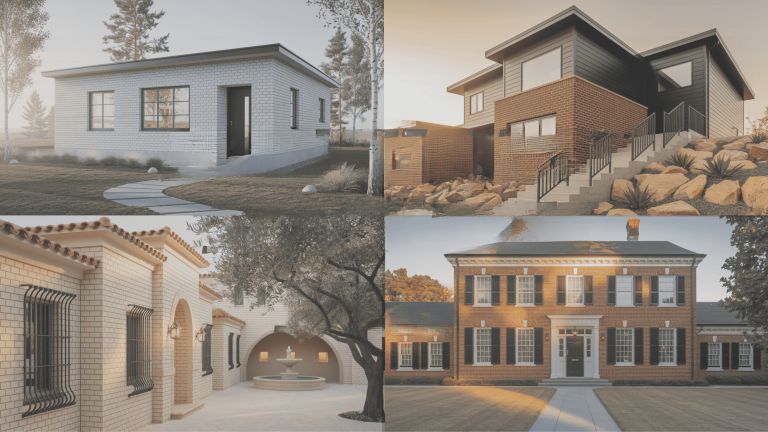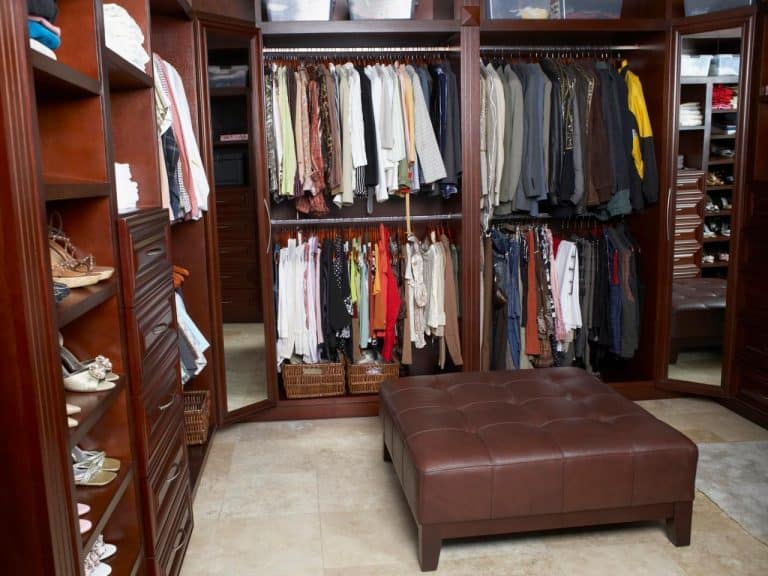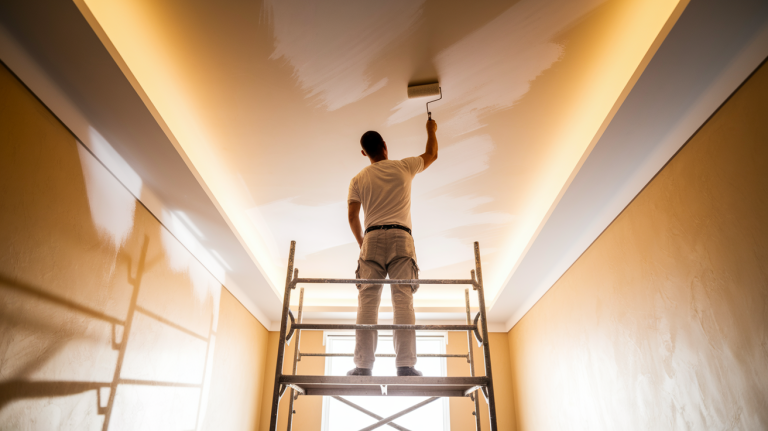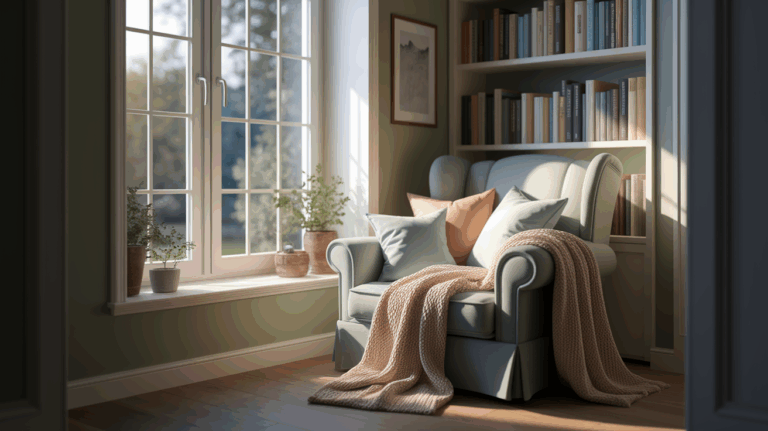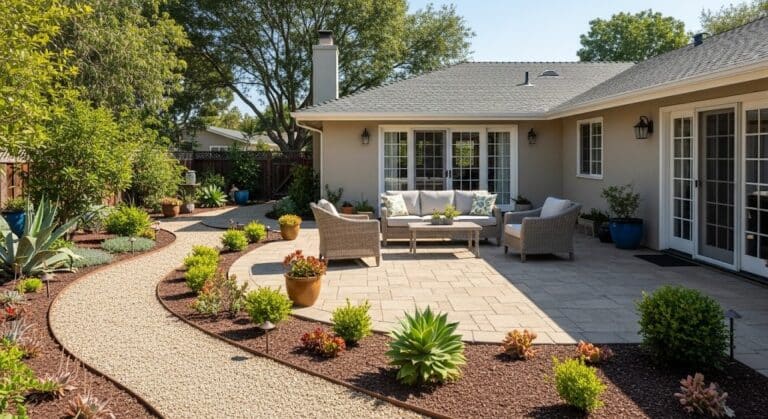15 Types of Exterior House Stone for Your Home
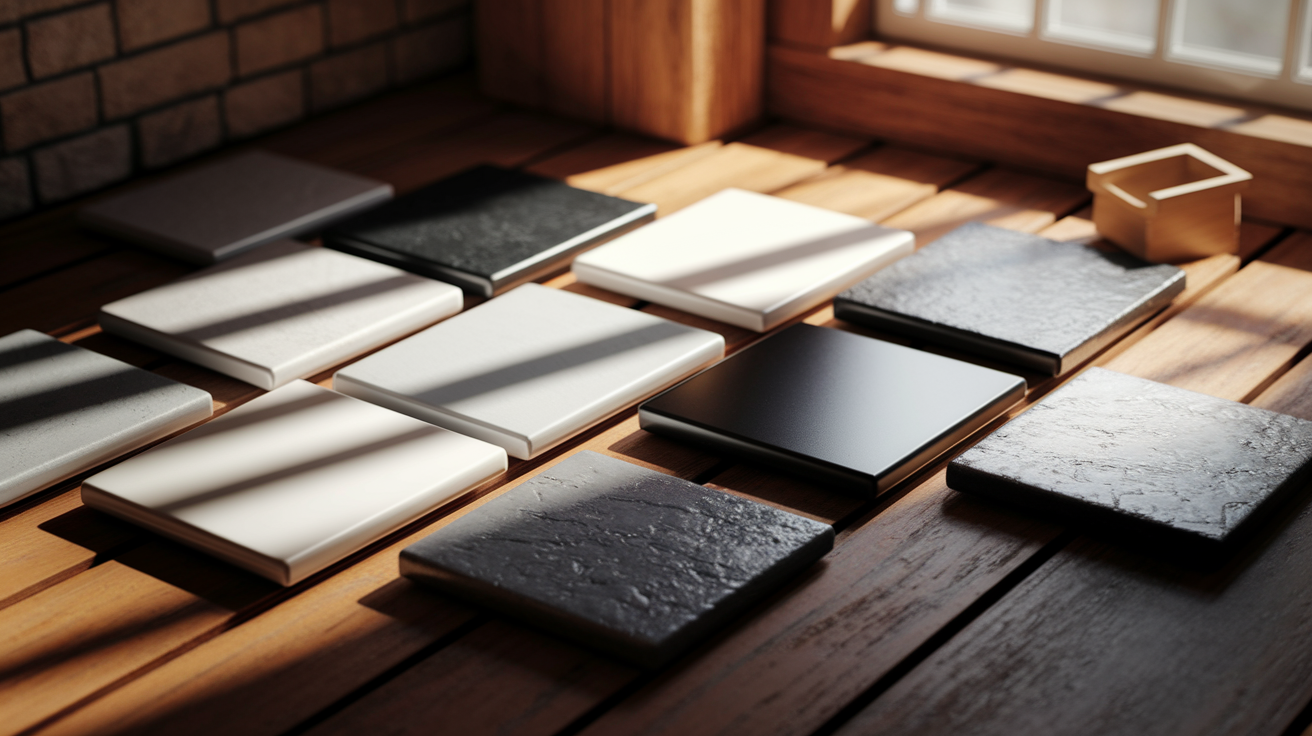
Selecting the right stone for your home’s exterior is crucial, as it affects both appearance and durability.
Well, natural stone gives homes character, strength, and permanence unmatched by other materials.
Each stone type offers unique colors, textures, and properties for your home’s design. From sandstone’s warm tones to basalt’s high presence, options suit various styles and climates.
This guide examines distinct stone varieties, offering insights into their attributes, cost considerations, advantages, limitations, and practical tips for optimal installation and maintenance.
List of Types of Exterior House Stone
Here’s a curated list of various types of exterior house stone options to upgrade your home’s curb appeal and charm.
1. Limestone
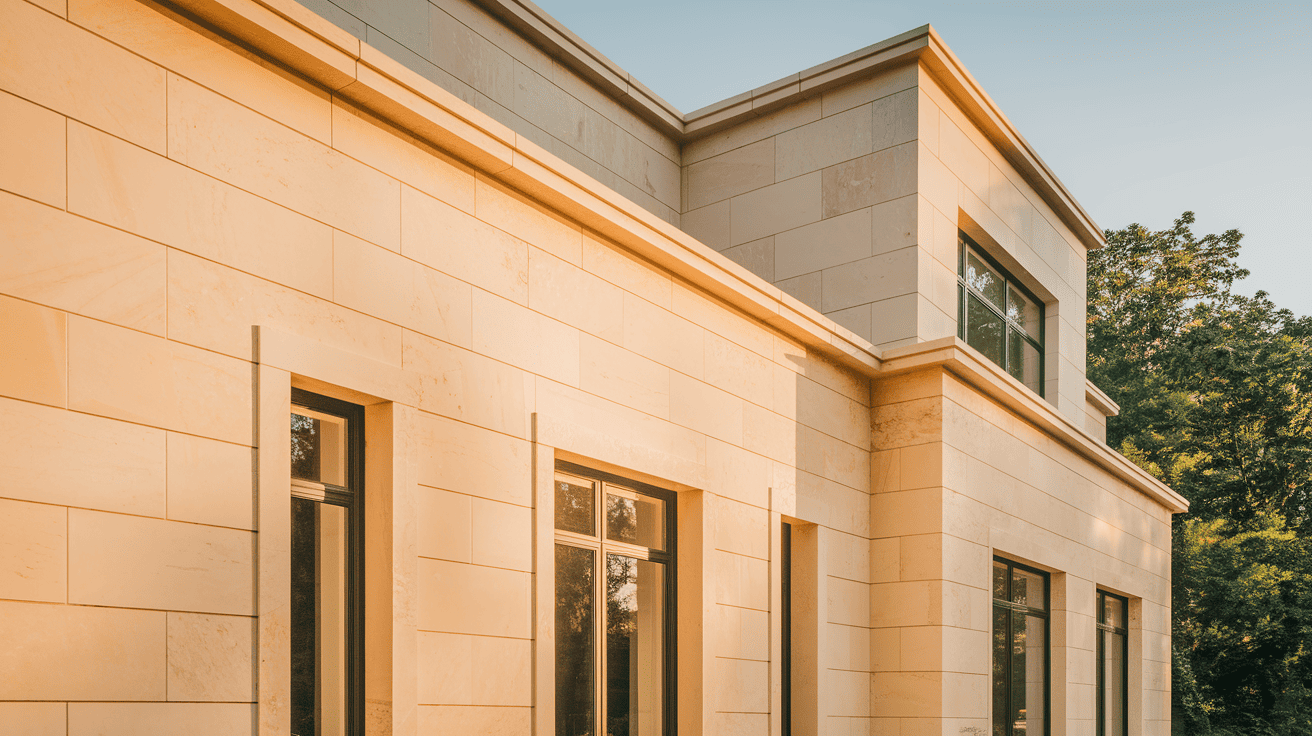
Limestone forms from marine organisms and mineral deposits over millions of years. Its main component is calcium carbonate.
Limestone comes in various colors, including cream, tan, and gray. Its texture can range from smooth to rough, giving homes a classic appearance.
Many historical buildings showcase limestone exteriors due to its longevity. The material works well with both modern and traditional architectural styles.
Pros
- Excellent durability with proper care
- Natural insulation properties
- Good resistance to weather conditions
- Maintains color over time
Cons
- Porous nature requires sealing
- Can be damaged by acidic substances
- Heavier than some alternatives
- May show water stains
Price: $15-$30 per square foot installed
Pro Pro Tip: Apply a quality sealer every 2-3 years to protect the limestone from moisture absorption and staining.
2. Granite
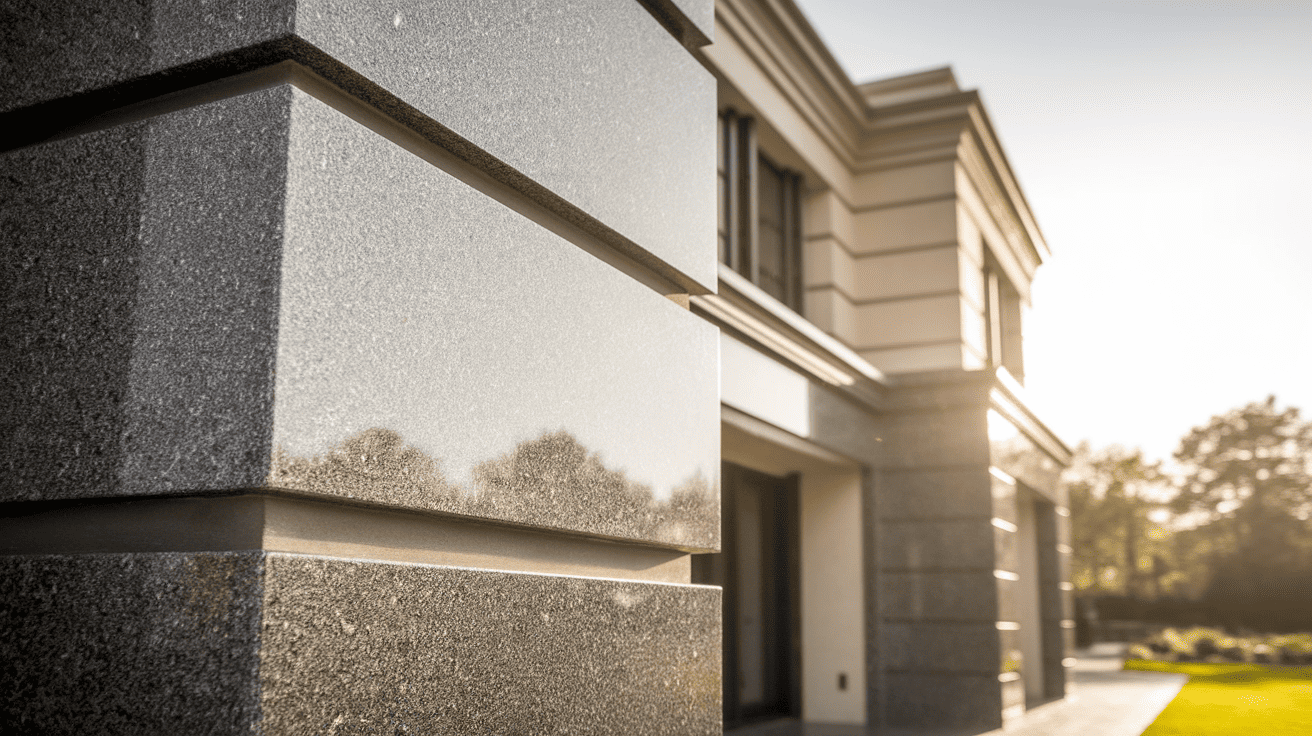
Granite forms deep within the earth under extreme heat and pressure. This igneous rock consists mainly of quartz, feldspar, and mica.
The dense composition gives granite remarkable strength and longevity. It remained practically unchanged for centuries when used on building exteriors.
The stones’ colors range from blacks and grays to pinks, blues, and whites. The speckled pattern comes from various mineral deposits.
Pros
- Extremely hard and durable
- Highly resistant to weather and scratches
- Very low maintenance
- Almost zero water absorption
Cons
- Higher cost than many stone options
- Heavy weight requires strong foundation support
- Limited flexibility in installation
- Professional installation required
Price: $25-$50 per square foot installed
Pro Pro Tip: For granite exterior walls, choose a surface finish that enhances slip resistance, such as thermal or flamed treatments.
3. Sandstone
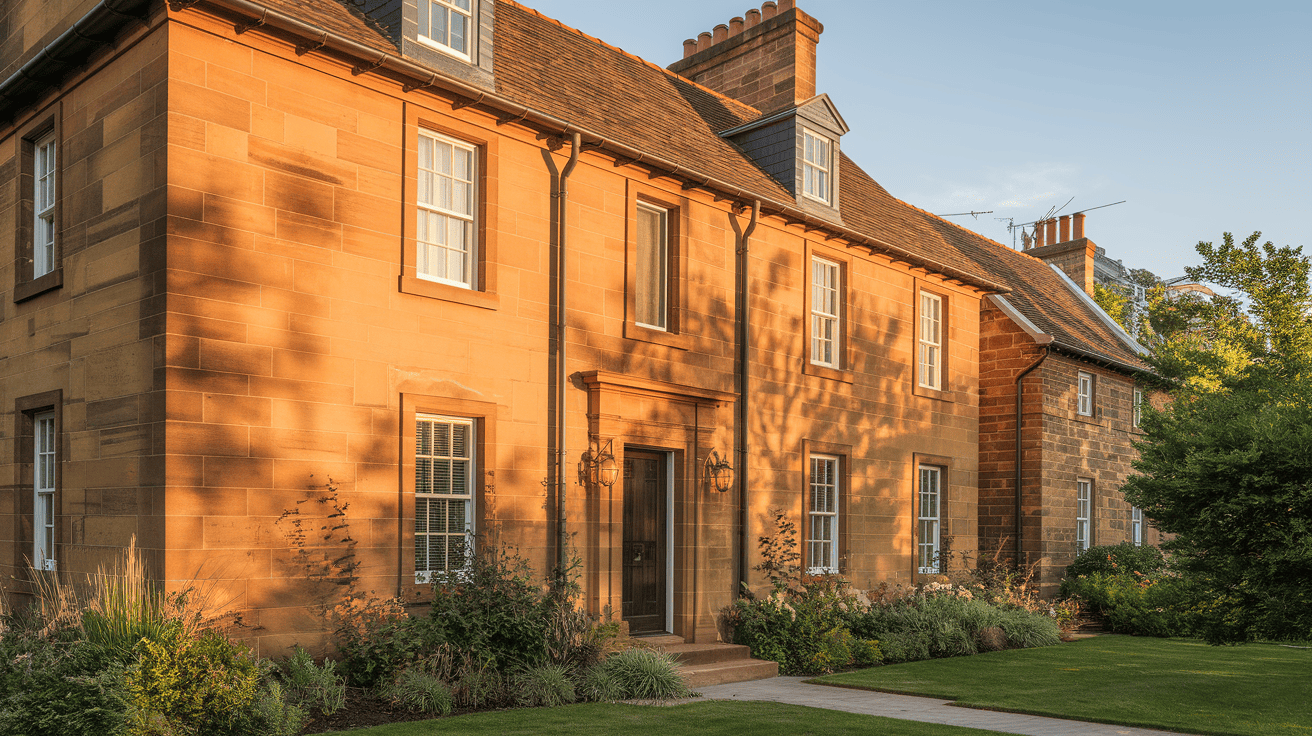
Sandstone forms when sand grains cement together over time. This sedimentary rock offers a grainy texture with visible layers.
The stone comes in warm tones, including tan, brown, red, and yellow. These colors come from iron oxide and other minerals in the rock.
Sandstone gives homes a soft, natural look. The material has been used in construction for thousands of years across many cultures.
Pros
- Natural warmth in appearance
- Cuts and shapes easily
- Good for carved details
- Ages with character
Cons
- Softer than many stones
- More porous without sealing
- Can chip more easily
- Requires regular maintenance
Price: $20-$35 per square foot installed
Pro Pro Tip: In cold climates, make sure sandstone is rated for freeze-thaw cycles to prevent cracking during winter months.
4. Slate
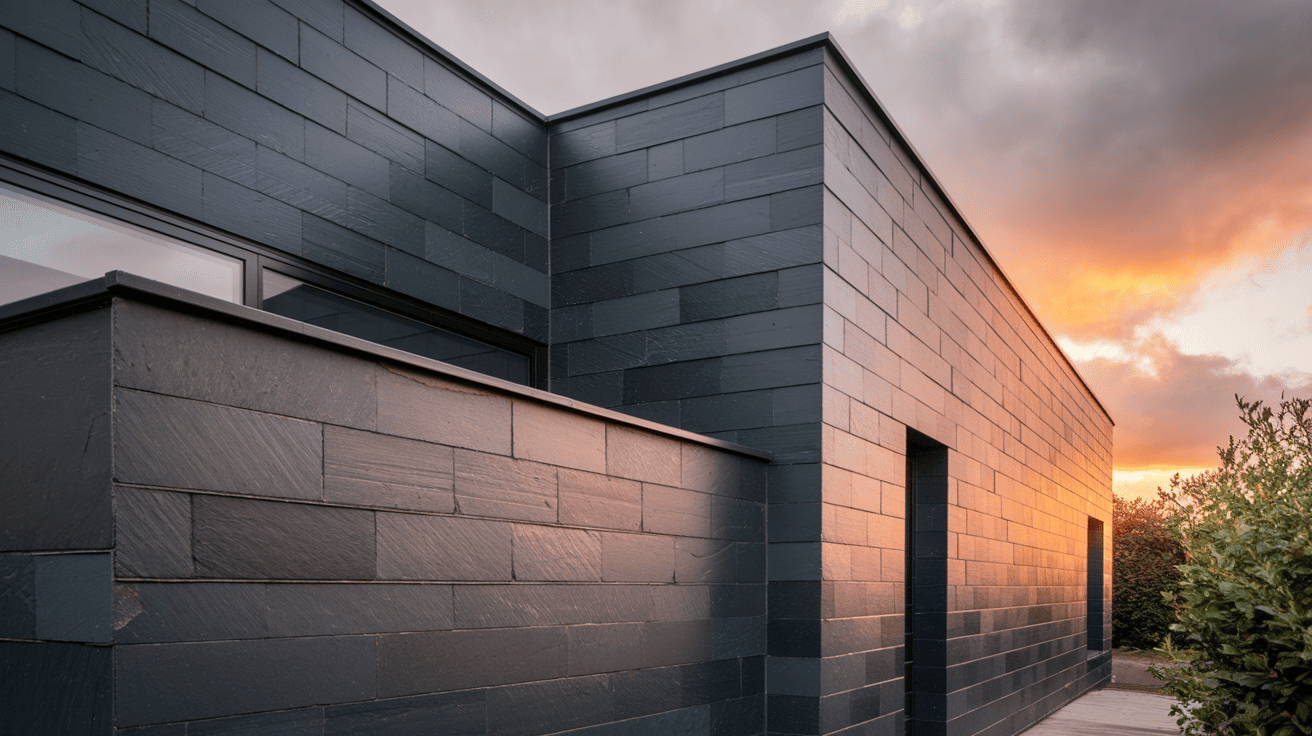
Slate forms from clay and fine-grained sediments under low heat and pressure. This metamorphic rock splits naturally into thin, flat sheets.
The stone typically appears in shades of gray, black, green, purple, and red. Its surface has a distinctive matte finish with subtle variations.
Slate provides homes with a clean, structured appearance. The material works particularly well for modern and contemporary designs.
Pros
- Natural water resistance
- Fire resistant
- Long lifespan (100+ years)
- Low maintenance needs
Cons
- Can be brittle if not installed correctly
- A higher skill level is needed for installation
- Limited color options
- May fade slightly over decades
Price: $20-$40 per square foot installed
Pro Tip: Use proper flashing and water management systems behind the slate to prevent moisture issues in the wall assembly.
5. Travertine
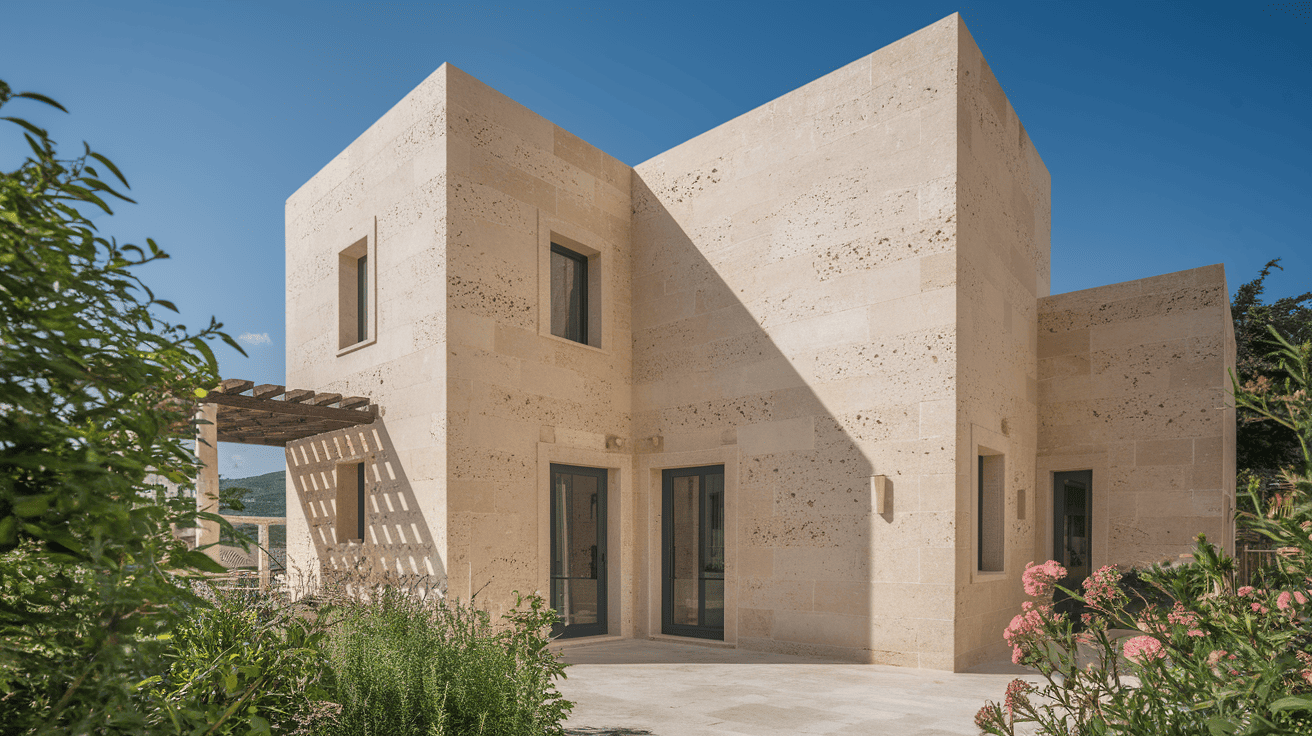
Travertine forms near hot springs where calcium carbonate deposits build up. This limestone variety has distinctive small holes throughout.
The stone typically comes in light colors such as beige, tan, and cream. Its surface can be filled or left natural with visible small holes.
Travertine gives homes a Mediterranean feel. The classic look connects to ancient Roman and Greek architectural traditions.
Pros
- Natural insulation properties
- Ages gracefully
- Good sound absorption
- Distinctive texture
Cons
- Porous without sealing
- Can be damaged by acidic substances
- Requires regular maintenance
- Holes can trap dirt
Price: $15-$30 per square foot installed
Pro Tip: Consider filled travertine for exterior applications to reduce maintenance and prevent debris accumulation in natural holes.
6. Fieldstone
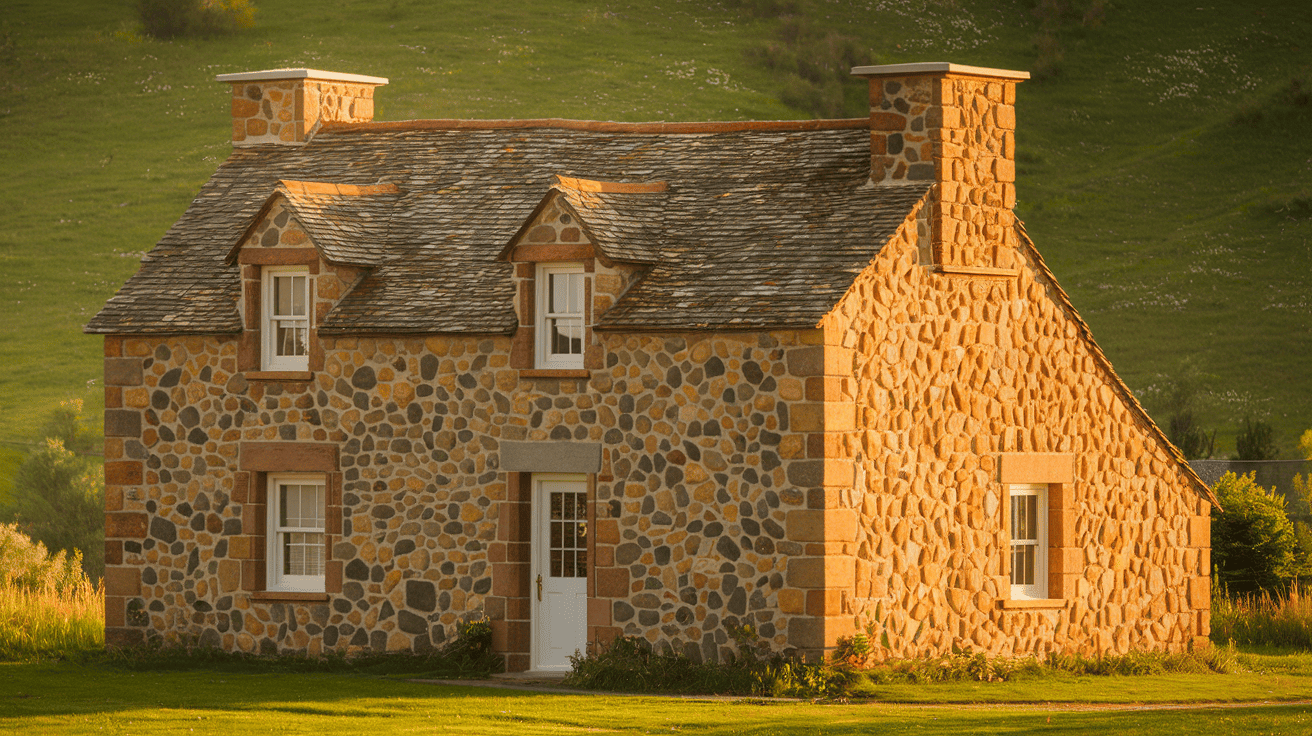
Fieldstones are stones collected from fields or meadows. Each piece has unique shapes and sizes formed by natural weathering.
These stones typically show a mix of colors, including browns, grays, and tans. Their irregular shapes create a distinctly organic pattern.
Fieldstone brings rustic charm to home exteriors. The varied textures and colors add visual interest that manufactured materials cannot match.
Pros
- Completely natural appearance
- Each installation is unique
- Very durable
- Often locally sourced
Cons
- Challenging to install properly
- Limited design control
- Higher labor costs
- May need repointing over time
Price: $18-$32 per square foot installed
Pro Tip: Work with your mason to sort fieldstones by size and color before installation for a more cohesive final appearance.
7. Quartzite
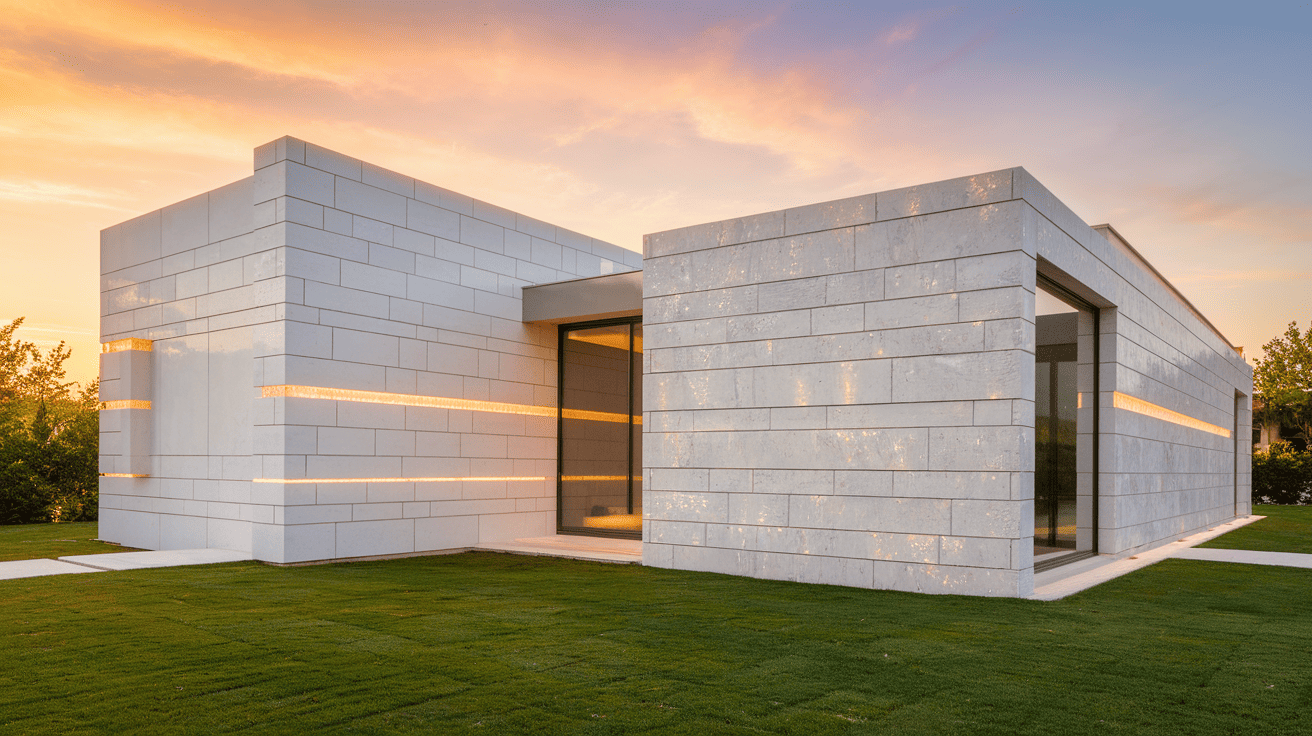
Quartzite forms when sandstone undergoes intense heat and pressure. This metamorphic rock contains primarily fused quartz minerals.
The stone ranges from white and light gray to yellow, red, and blue. Its surface often shows a subtle sparkle from quartz crystals.
Quartzite offers homes both beauty and strength. The material maintains its appearance for decades with minimal care.
Pros
- Extremely hard and durable
- Resistant to scratching and etching
- Low water absorption
- Stands up to harsh weather
Cons
- Higher cost than many stones
- Heavy weight
- Difficult to cut and shape
- Limited local availability in some areas
Price: $25-$45 per square foot installed
Pro Tip: Consider quartzite for areas exposed to harsh weather conditions like coastal regions due to its excellent salt resistance.
8. Bluestone

Bluestone is a dense sandstone or feldspathic sandstone. Despite its name, the stone comes in various blue-gray to blue-green.
The material has a fine-grained, smooth texture with occasional natural markings. Cut pieces typically have clean, straight edges.
Bluestone creates a refined, stately appearance on homes. The subtle color variations add depth without overwhelming other design elements.
Pros
- Dense and strong
- Consistent color
- Cuts into precise shapes
- Good slip resistance when wet
Cons
- It can fade somewhat over time
- Limited color range
- Needs proper foundation support
- Higher cost than basic stones
Price: $25-$40 per square foot installed
Pro Tip: To create a more cohesive look for bluestone veneer, use a darker mortar color that complements rather than contrasts with the stone.
9. Marble
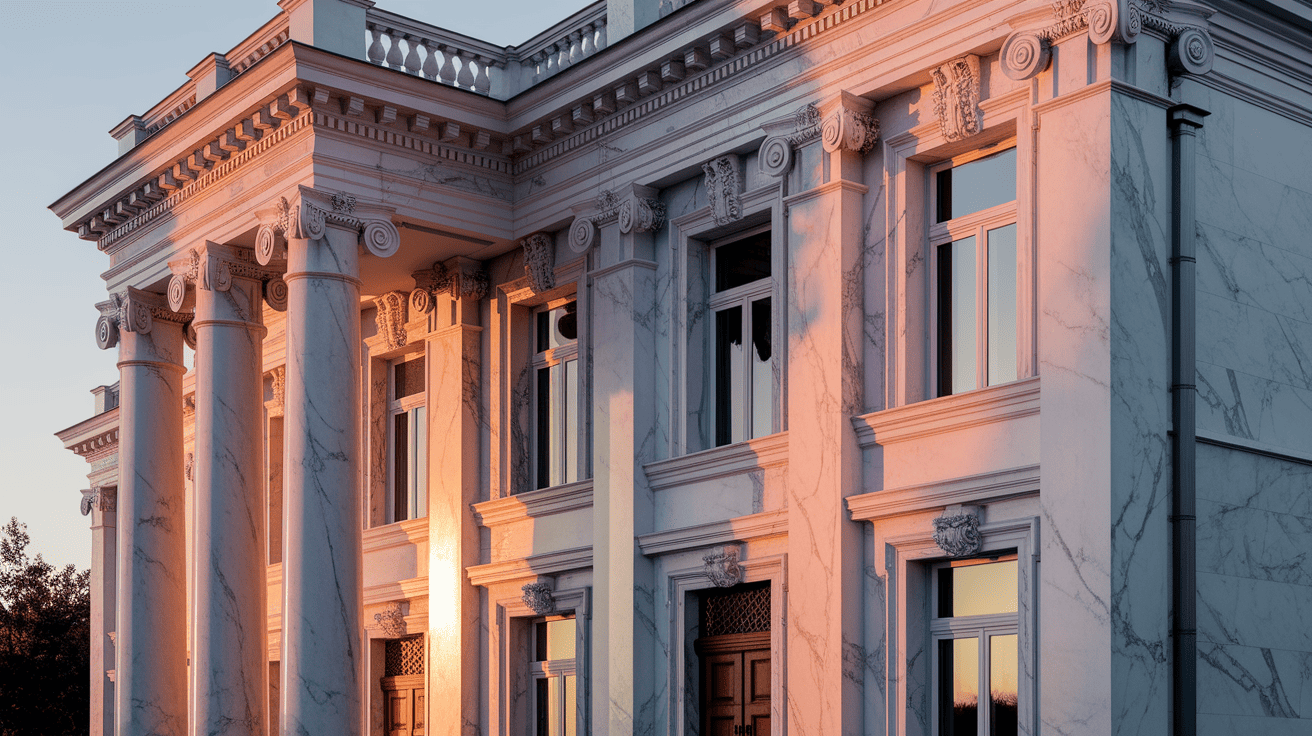
Marble forms when limestone undergoes heat and pressure deep within the Earth. This metamorphic rock consists mainly of recrystallized carbonate minerals.
The stone shows distinctive veining patterns in various colors. White, cream, gray, green, and black varieties all serve well on exteriors.
Marble brings luxury and sophistication to home exteriors. The classical material has adorned important buildings for thousands of years.
Pros
- Striking visual appeal
- Unique patterns in each piece
- Cuts and carves precisely
- Maintains value over time
Cons
- More susceptible to acid rain damage
- Requires regular sealing
- Can show etching and weathering
- Higher maintenance needs
Price: $30-$60 per square foot installed
Pro Tip: For exterior marble applications, choose a honed or flamed finish rather than polished for better weather resistance and slip protection.
10. Basalt
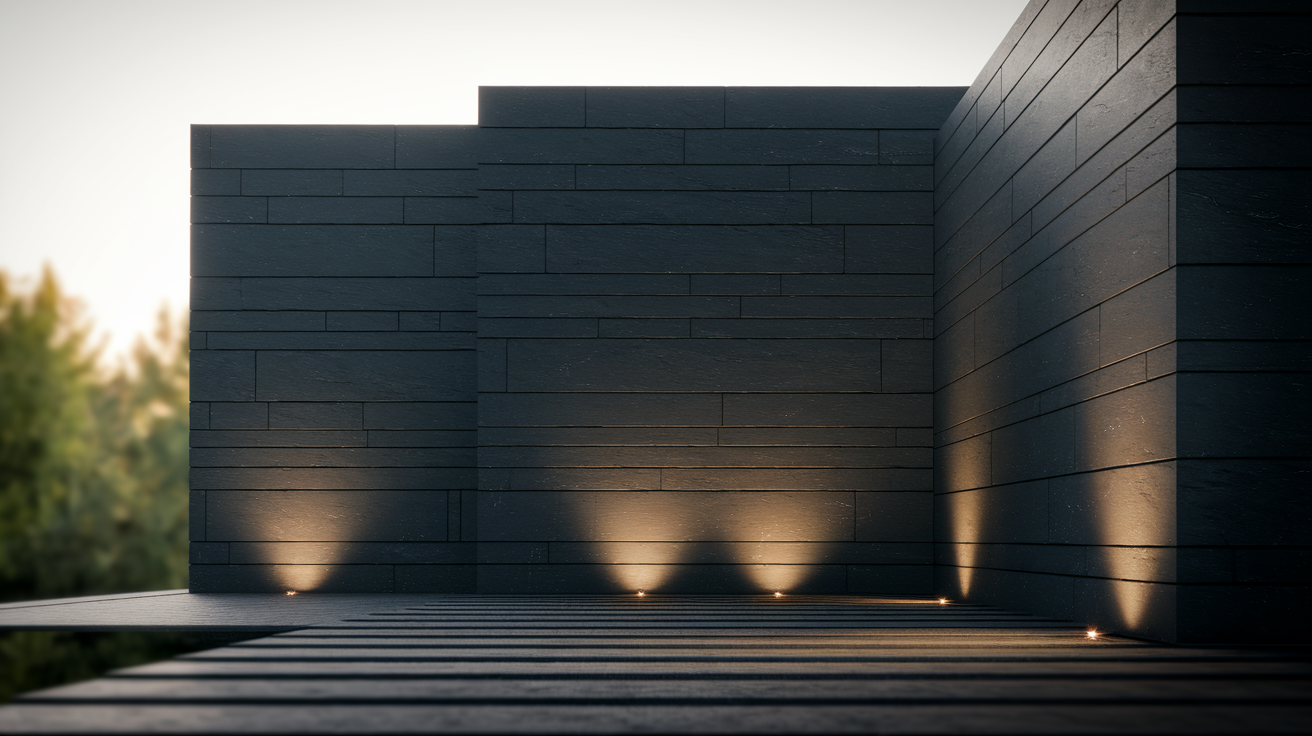
Basalt forms from cooled lava with minimal gas content. This igneous rock has a dense, fine-grained structure with minimal porosity.
The stone typically appears dark gray to black with a consistent color. Its texture can range from smooth to slightly rough.
Basalt brings a bold, contemporary look to home exteriors. The dark color creates a contrast with other building materials.
Pros
- Extremely durable
- Resistant to weather and chemicals
- Very low water absorption
- Minimal maintenance required
Cons
- Limited color options
- It can be difficult to cut
- Heavy weight
- Dark color absorbs heat
Price: $20-$35 per square foot installed
Pro Tip: Pair basalt with lighter materials to create visual contrast and prevent the home from appearing too dark or imposing.
11. Onyx
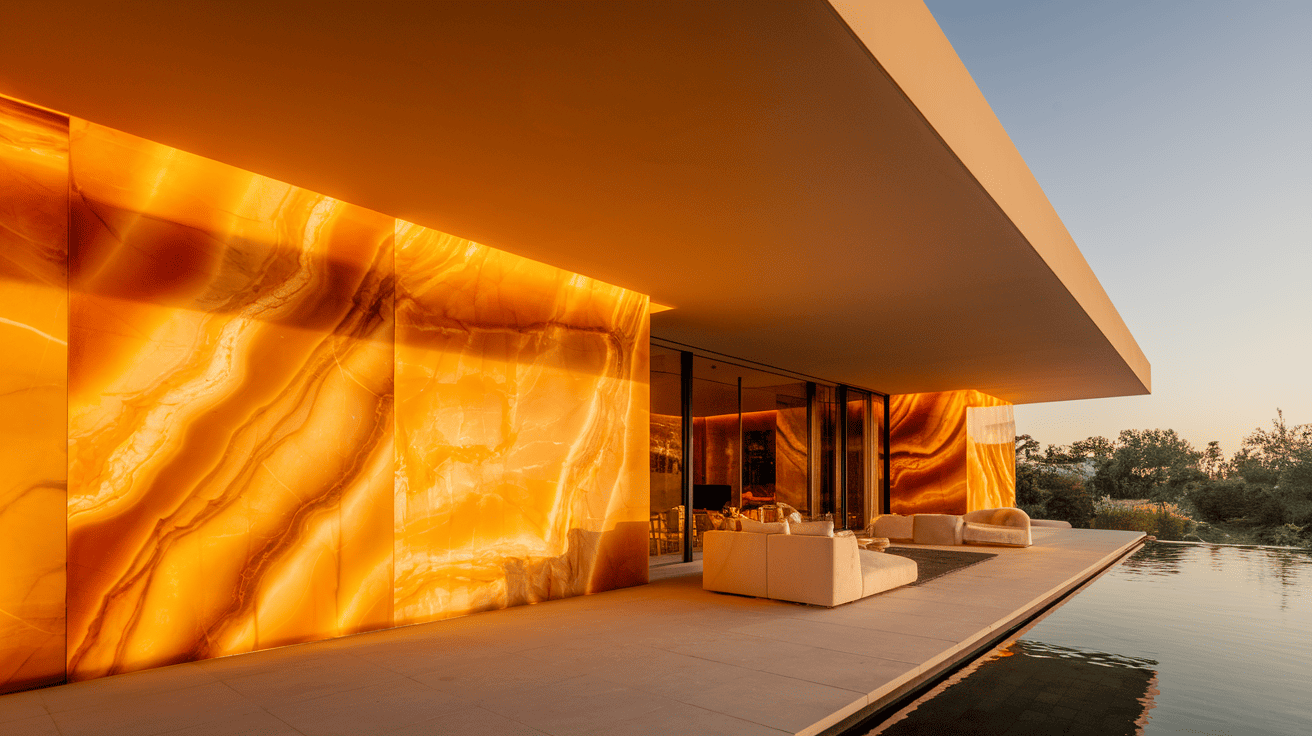
Onyx is a translucent calcite stone formed in caves. This variety of chalcedony shows distinctive banding patterns throughout.
The stone offers incredible color variety, including amber, green, white, and black. Its translucent nature allows light to penetrate slightly.
Onyx brings a unique visual impact to accent areas on home exteriors. The material creates focal points that stand out from the surrounding elements.
Pros
- Stunning visual impact
- Potential for backlit applications
- Unique to each installation
- High-end appearance
Cons
- Less durable for exterior use
- Requires careful sealing
- Very high cost
- Not suitable for all climates
Price: $75-$150 per square foot installed
Pro Tip: Use onyx for small accent areas that are protected from direct weather exposure rather than large wall surfaces.
12. Soapstone
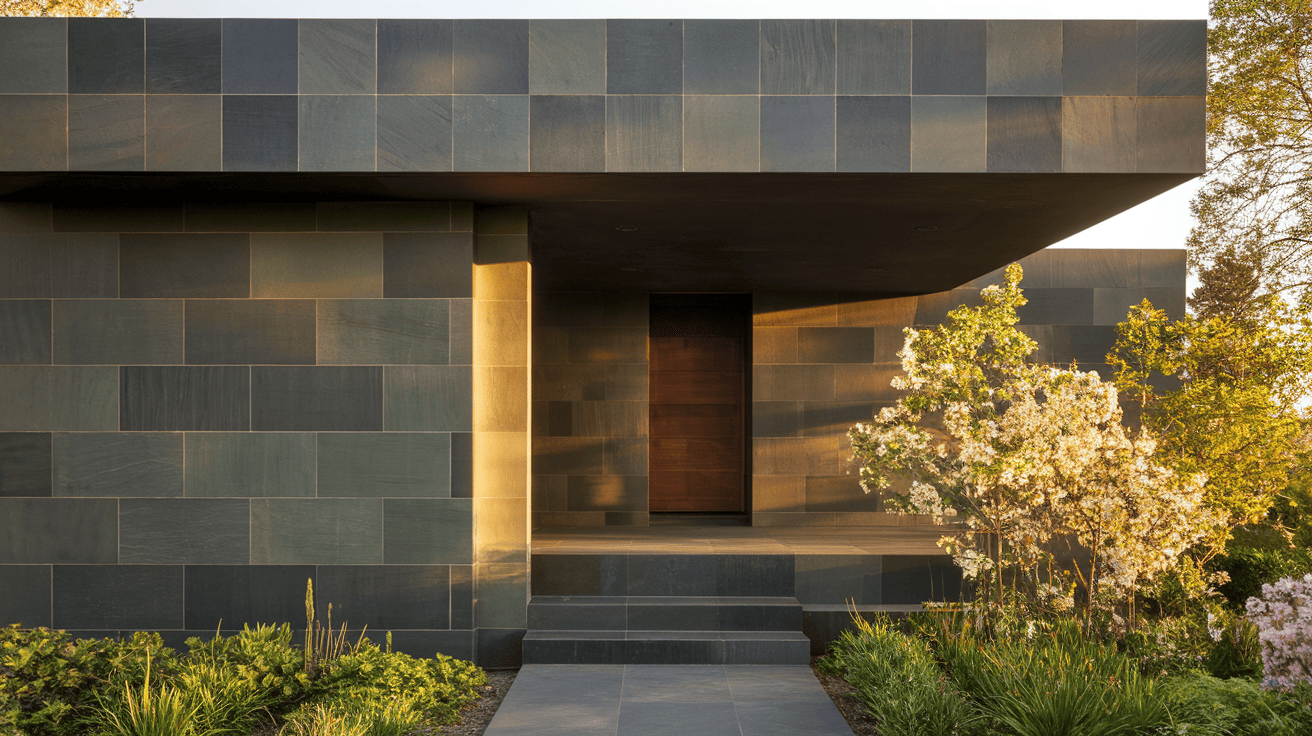
Soapstone consists primarily of talc, making it softer than many stones. This metamorphic rock has a characteristically smooth, soapy feel.
The stone typically comes in shades of gray, often with a subtle green tint. Its surface darkens naturally over time, gaining character.
Soapstone provides homes with a subtle, understated style. The material ages gracefully, developing a natural finish.
Pros
- Naturally resistant to acids
- Non-porous surface
- Handles temperature changes well
- Ages with character
Cons
- Softer than many stones
- Can scratch more easily
- Limited color range
- May require occasional oiling
Price: $30-$50 per square foot installed
Pro Tip: Apply mineral oil to exterior soapstone periodically to enhance its color and protect it against the elements.
13. River Rock
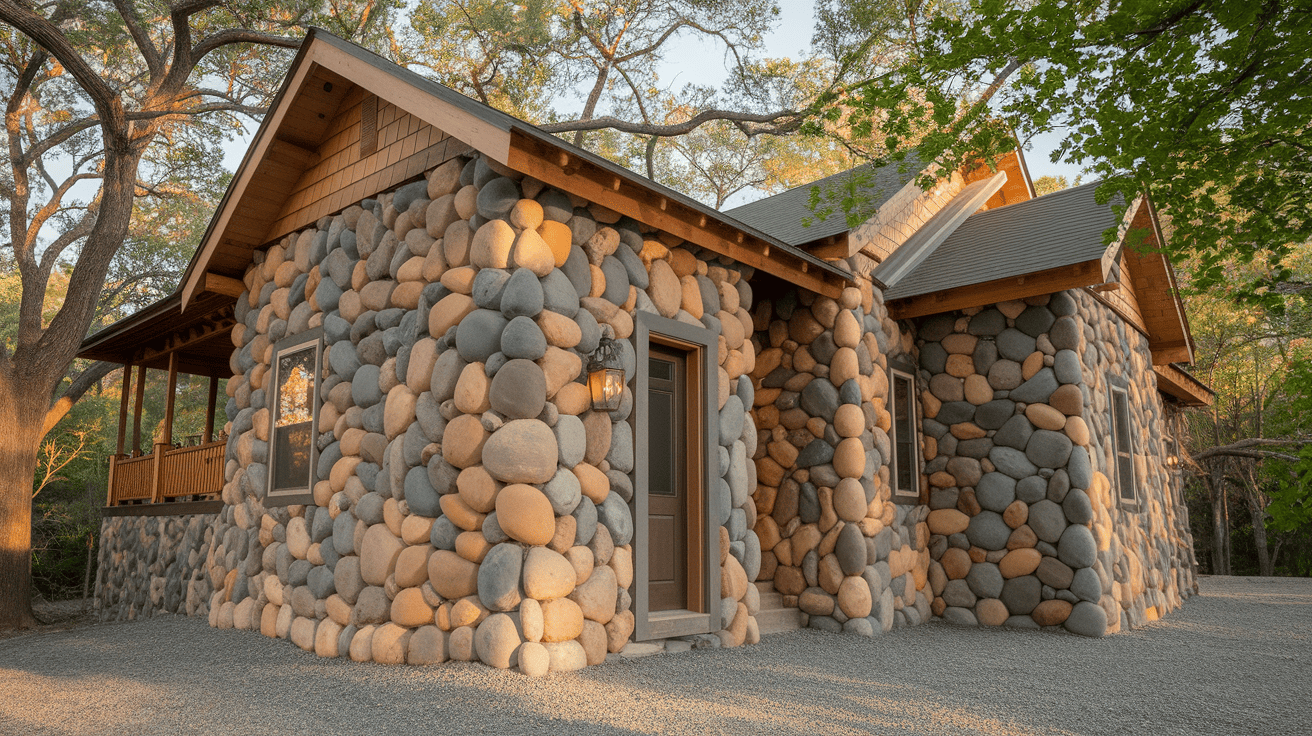
River rock consists of stones smoothed by water over thousands of years. Each stone has rounded edges and a polished surface.
These stones come in various colors, including tan, gray, white, and brown. Their sizes typically range from 1 to 6 inches in diameter.
River rock gives homes a natural, organic quality. The smooth stones connect to the water elements in the landscape.
Pros
- Naturally weathered appearance
- Extremely durable
- Low maintenance
- Good drainage properties
Cons
- Limited structural application
- Mainly used as a veneer
- Can trap moisture if improperly installed
- Challenging to clean if needed
Price: $12-$25 per square foot installed
Pro Tip: Install river rock with proper drainage measures behind the stone to prevent moisture issues in the wall assembly.
14. Gneiss
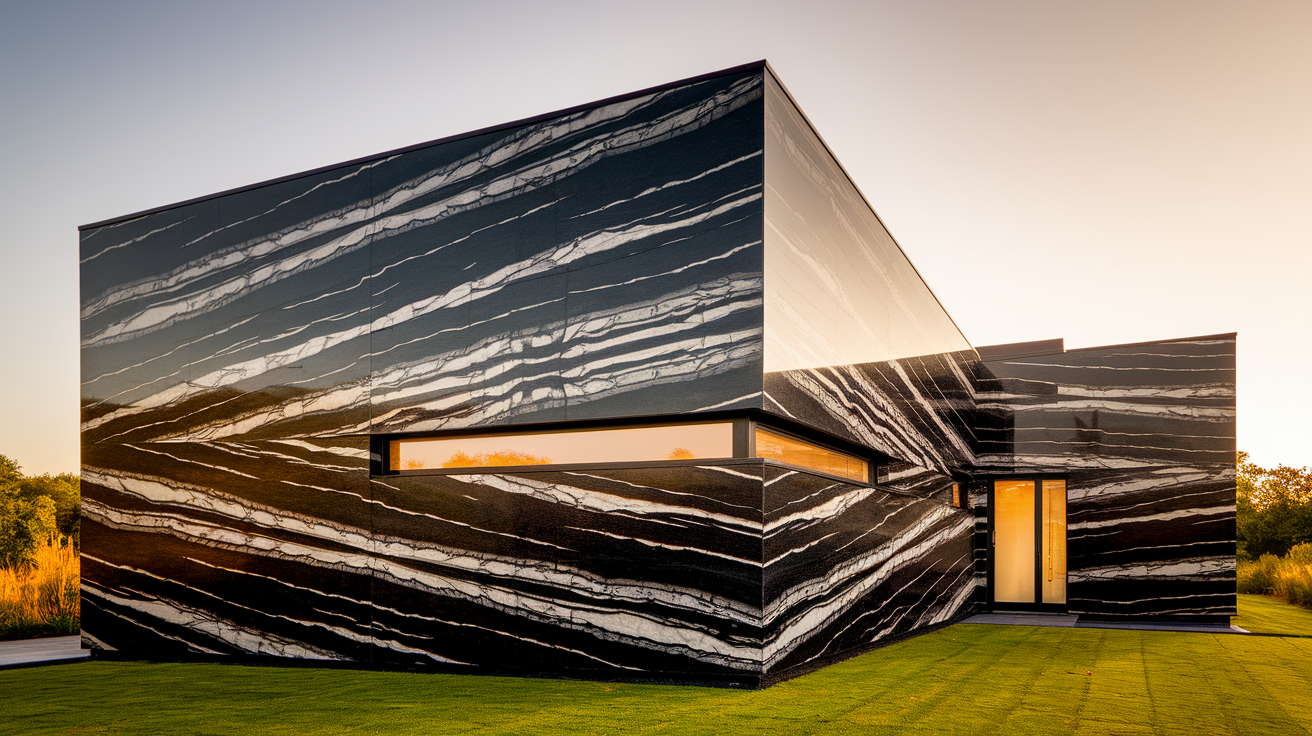
Gneiss forms when existing rock undergoes intense heat and pressure. This metamorphic rock shows distinctive banding patterns of light and dark minerals.
The stone typically displays black and white or gray banding. Its surface can be polished for a formal look or left natural.
Gneiss creates a visual texture on home exteriors. The banded patterns add movement and interest to otherwise flat surfaces.
Pros
- Extremely hard and durable
- Resistant to weathering
- Distinctive appearance
- Low maintenance needs
Cons
- Less commonly available
- Complicated installation
- High cost
- Heavier than many options
Price: $25-$45 per square foot installed
Pro Tip: Align the banding patterns of gneiss intentionally during installation to create either horizontal or vertical visual movement.
15. Schist
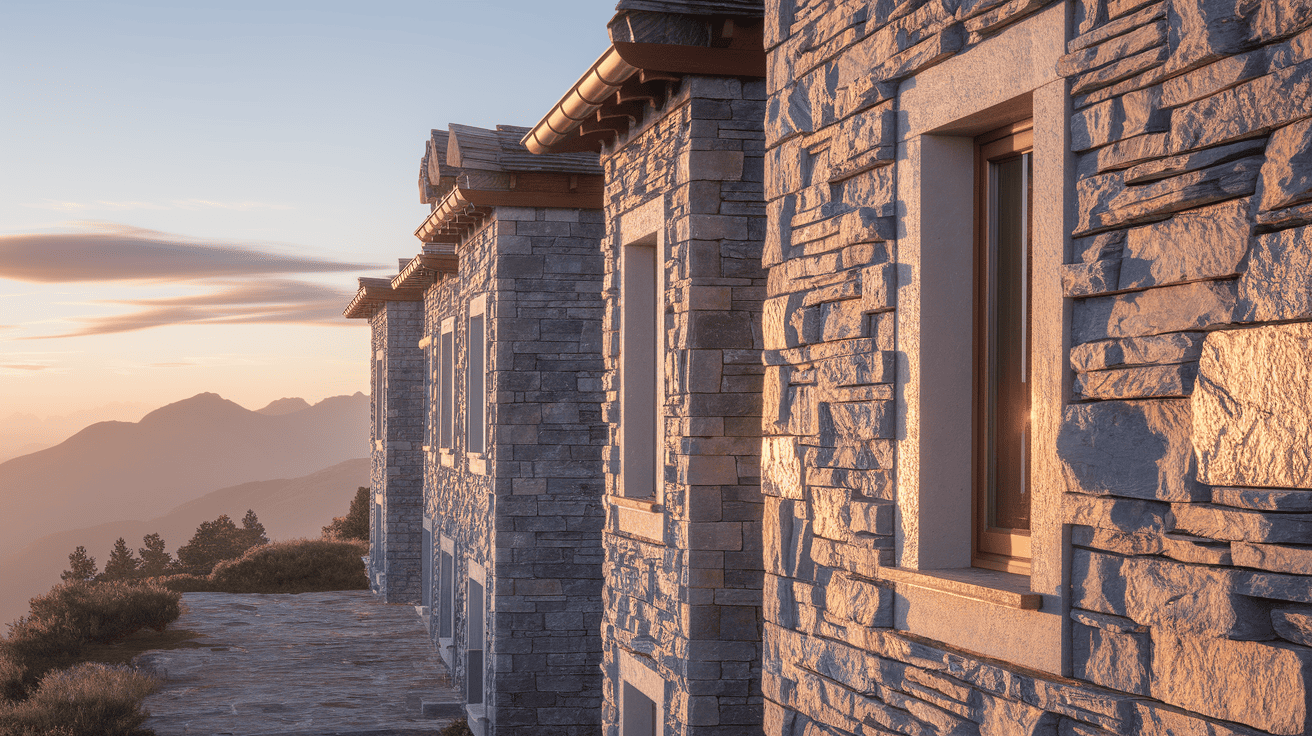
Schist forms from clay-rich sediments under medium heat and pressure. This metamorphic rock contains large, flat mineral grains that align in parallel.
The stone’s mica content gives it a distinctive shimmering quality. Its colors range from silver-gray to green, brown, and purple.
Schist provides homes with a uniquely textured, three-dimensional surface. The material catches light in ways that change throughout the day.
Pros
- Unique textural quality
- Natural sparkle in sunlight
- Good durability
- Interesting visual depth
Cons
- More challenging to clean
- Complex installation process
- Less common availability
- Variable quality by source
Price: $20-$40 per square foot installed
Pro Tip: To highlight its natural shimmer, place schist on walls that receive direct sunlight during part of the day for the best visual impact.
Conclusion
The perfect exterior stone balances looks with practical considerations such as climate compatibility, maintenance requirements, and budget constraints.
While premium options like marble and onyx create visual impact, more accessible choices such as limestone and fieldstone offer excellent value with proper care.
Consider working with experienced stonemasons who understand the specific properties of your chosen material. Remember that natural stone is an investment that uplifts your home’s value, durability, and curb appeal for decades.
By selecting thoughtfully and maintaining properly, your stone exterior will stand as a testament to quality craftsmanship and timeless design that improves with age.

